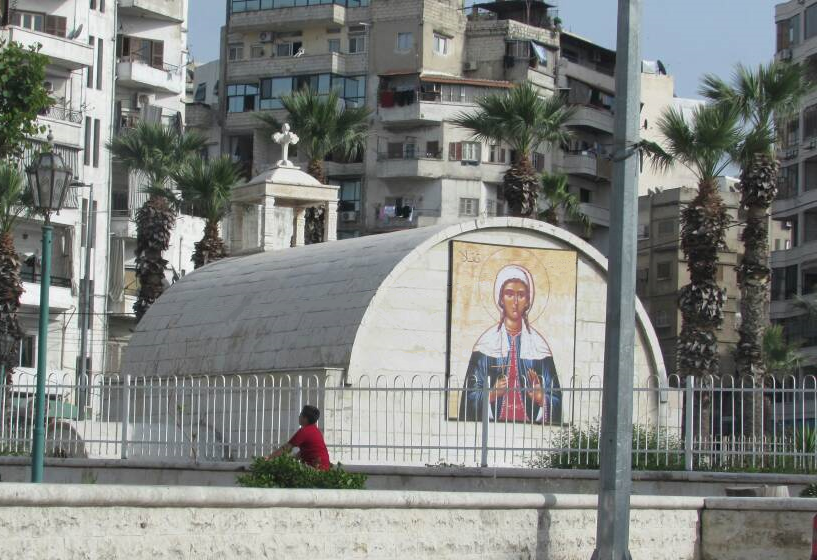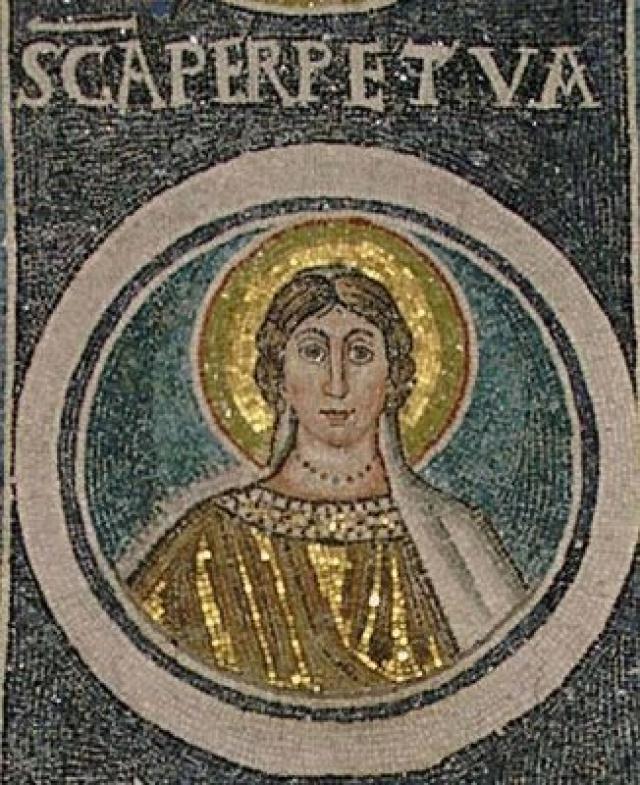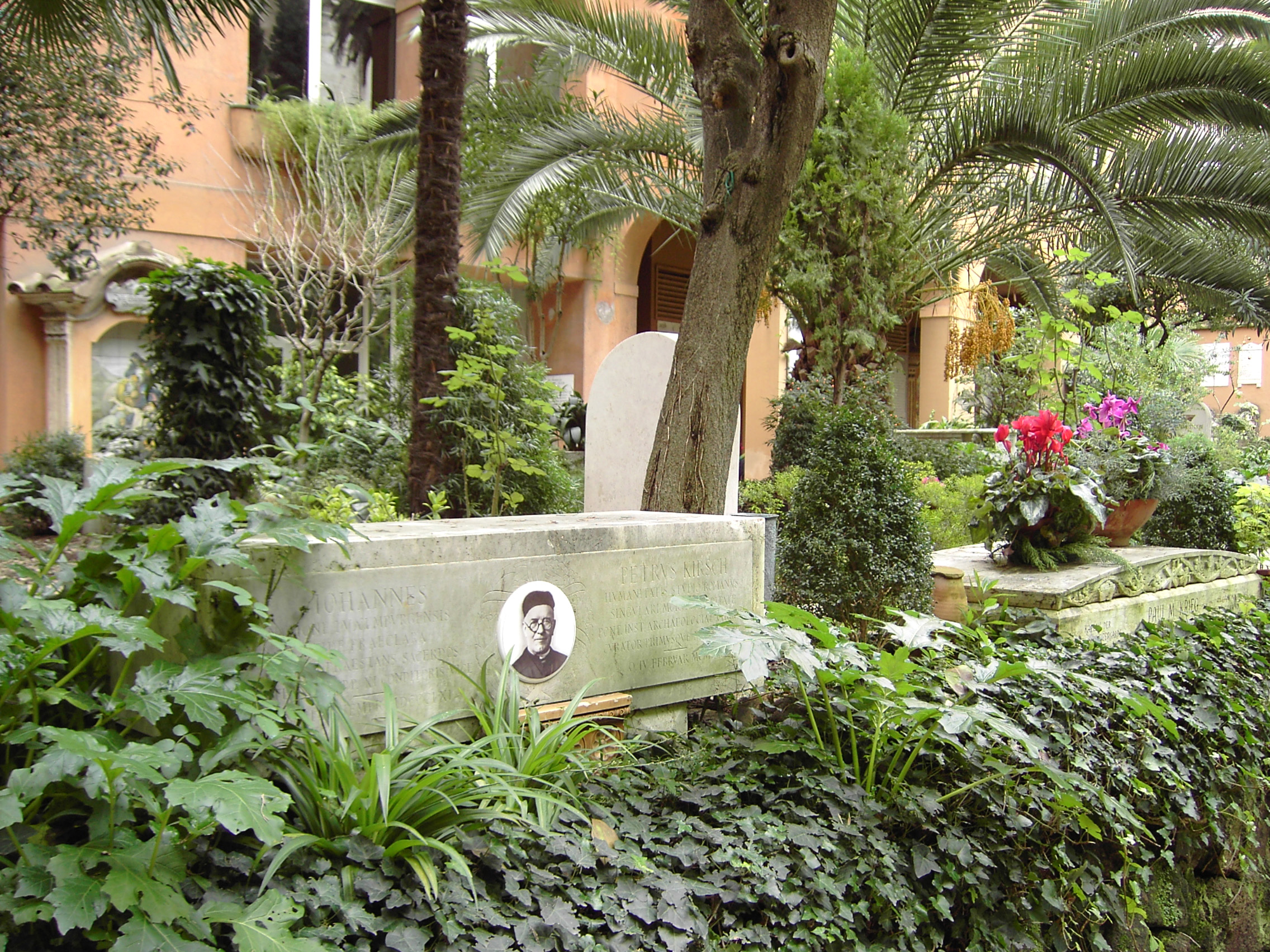|
Thecla (other)
Thecla ( grc, Θέκλα, ; el, Θέκλα; tr, Tekla) was a saint of the early Christian Church, and a reported follower of Paul the Apostle. The earliest record of her life comes from the ancient apocryphal '' Acts of Paul and Thecla''. Church tradition The ''Acts of Paul and Thecla'' is a 2nd-century text () which forms part of the ''Acts of Paul'', but was also circulated separately. According to the text, Thecla was a young noble virgin from Iconium who chose to leave her fiance so she could convert to Christianity and follow Paul. In the text, it is said that Thecla spent three days sitting by her window, listening to Paul speak about the Christian God and the importance of living in chastity. Thecla's mother, Theoclia, and fiance, Thamyris, became concerned that Thecla was going to follow Paul's teachings. They turned to local authorities to punish Paul for being a Christian and "mak ngvirgins averse to marriage". Paul was sent to prison, where Thecla visited him, ki ... [...More Info...] [...Related Items...] OR: [Wikipedia] [Google] [Baidu] |
Saint
In religious belief, a saint is a person who is recognized as having an exceptional degree of Q-D-Š, holiness, likeness, or closeness to God. However, the use of the term ''saint'' depends on the context and Christian denomination, denomination. In Catholic Church, Catholic, Eastern Orthodox Church, Eastern Orthodox, Anglican Communion, Anglican, Oriental Orthodox, and Lutheranism, Lutheran doctrine, all of their faithful deceased in Heaven are considered to be saints, but some are considered worthy of greater honor or emulation. Official ecclesiastical recognition, and consequently a public cult of veneration, is conferred on some denominational saints through the process of canonization in the Catholic Church or glorification in the Eastern Orthodox Church after their approval. While the English word ''saint'' originated in Christianity, History of religion, historians of religion tend to use the appellation "in a more general way to refer to the state of special holiness t ... [...More Info...] [...Related Items...] OR: [Wikipedia] [Google] [Baidu] |
Acts Of Paul And Thecla
The ''Acts of Paul and Thecla'' (''Acta Pauli et Theclae'') is an apocryphal story– Edgar J. Goodspeed called it a " religious romance"–of Paul the Apostle's influence on a young virgin named Thecla. It is one of the writings of the New Testament apocrypha. History of the text It is attested no earlier than Tertullian, ''De baptismo'' 17:5 (c. 190), who says that a presbyter from Asia wrote the ''History of Paul and Thecla'', and was deposed after confessing that he wrote it. Eugenia of Rome in the reign of Commodus (180–192) is reported in the Acts of her martyrdom to have taken Thecla as her model after reading the text, prior to its disapproval by Tertullian. Jerome recounts the information from Tertullian, and on account of his exactitude in reporting on chronology, some scholars regard the text a 1st-century creation. Many surviving versions of the ''Acts of Paul and Thecla'' in Greek, and some in Coptic, as well as references to the work among Church fathers show th ... [...More Info...] [...Related Items...] OR: [Wikipedia] [Google] [Baidu] |
Perpetua
Perpetua and Felicity ( la, Perpetua et Felicitas) were Christian martyrs of the 3rd century. Vibia Perpetua was a recently married, well-educated noblewoman, said to have been 22 years old at the time of her death, and mother of an infant son she was nursing. Felicity, an enslaved woman imprisoned with her and pregnant at the time, was martyred with her. They were put to death along with others at Carthage in the area of Africa in the Roman province of Africa (now known as Tunisia). ''The Passion of Perpetua and Felicity'' narrates their death. According to the passion narrative, five people were arrested and executed at the military games in celebration of the Emperor Septimius Severus's birthday. Along with Felicitas and Perpetua, these included two free men, Saturninus and Secundulus, and an enslaved man named Revocatus; all were catechumens or Christians being instructed in the faith but not yet baptized. To this group of five was added a further man named Saturus, who vol ... [...More Info...] [...Related Items...] OR: [Wikipedia] [Google] [Baidu] |
Diocletian
Diocletian (; la, Gaius Aurelius Valerius Diocletianus, grc, Διοκλητιανός, Diokletianós; c. 242/245 – 311/312), nicknamed ''Iovius'', was Roman emperor from 284 until his abdication in 305. He was born Gaius Valerius Diocles to a family of low status in the Roman province of Dalmatia. Diocles rose through the ranks of the military early in his career, eventually becoming a cavalry commander for the army of Emperor Carus. After the deaths of Carus and his son Numerian on a campaign in Persia, Diocles was proclaimed emperor by the troops, taking the name Diocletianus. The title was also claimed by Carus's surviving son, Carinus, but Diocletian defeated him in the Battle of the Margus. Diocletian's reign stabilized the empire and ended the Crisis of the Third Century. He appointed fellow officer Maximian as ''Augustus'', co-emperor, in 286. Diocletian reigned in the Eastern Empire, and Maximian reigned in the Western Empire. Diocletian delegated further on ... [...More Info...] [...Related Items...] OR: [Wikipedia] [Google] [Baidu] |
Acts Of The Martyrs
Acts of the Martyrs (Latin ''Acta Martyrum'') are accounts of the suffering and death of a Christian martyr or group of martyrs. These accounts were collected and used in church liturgies from early times, as attested by Augustine of Hippo, Saint Augustine."Acts of the Martyrs." Cross, F. L., ed. The Oxford dictionary of the Christian church. New York: Oxford University Press. 2005 These accounts vary in authenticity. The most reliable follow accounts from trials. Very few of these have survived. Perhaps the most reliable of these is the account of Saint Cyprian. The account of Scillitan Martyrs is also based on trial records, though it has been embellished with miraculous and apocryphal material. A second category, the "Passiones," are based on eyewitness accounts. These include the martyrdoms of Saint Ignatius of Antioch, Martyrdom of Polycarp, Saint Polycarp, the Martyrs of Lyons, the famous ''Saints Perpetua and Felicitas, Acts of Perpetua and Felicitas'', and the Passion of S ... [...More Info...] [...Related Items...] OR: [Wikipedia] [Google] [Baidu] |
Methodius Of Olympus
Saint Methodius of Olympus ( el, Μεθόδιος) (died c. 311) was an early Christian bishop, ecclesiastical author, and martyr. Today, he is honored as a saint and Church Father; the Catholic Church commemorates his feast on June 20. Life Few reports have survived on the life of this first systematic opponent of Origen; even these short accounts present many difficulties. Eusebius does not mention him in his ''Church History'', probably because he opposed various theories of Origen, thus Saint Jerome provides the earliest accounts of him. According to him, Methodius suffered martyrdom at Chalcis at the end of the newest persecution, i.e., under Diocletian, Galerius or Maximinus Daia. Although he then adds, "that some assert", that this may have happened under Decius and Valerian a, this statement (''ut alii affirmant''), adduced even by him as uncertain, is unlikely, given that Methodius also wrote against the Neoplatonic philosopher Porphyry (234–305). The location of M ... [...More Info...] [...Related Items...] OR: [Wikipedia] [Google] [Baidu] |
Macarius Magnes
Macarius Magnes ( grc-gre, Μακάριος Μάγνης) is the author of an apology against a Neo-Platonic philosopher of the early part of the fourth century, contained in a manuscript of the fifteenth century discovered at Athens in 1867 and edited by C. Blondel (Paris, 1876). This work (called in Greek; ''Apocriticus'' in Latin) agrees in its dogmatics with Gregory of Nyssa, and is valuable on account of the numerous excerpts from the writings of the opponent of Macarius. These fragments are apparently drawn from the lost ''Against the Christians'' of Porphyry or from the ''Lover of Truth'' of Hierocles. He may be the Macarius, bishop of Magnesia, who, at the Synod of the Oak in 403, brought charges against Heraclides, bishop of Ephesus, the friend of John Chrysostom, although Adolf Harnack dated him in the late third century. Like Macarius the Younger, this Macarius is frequently confused with Macarius of Egypt Macarius of Egypt, ''Osios Makarios o Egyptios''; c ... [...More Info...] [...Related Items...] OR: [Wikipedia] [Google] [Baidu] |
Gregory Of Nyssa
Gregory of Nyssa, also known as Gregory Nyssen ( grc-gre, Γρηγόριος Νύσσης; c. 335 – c. 395), was Bishop of Nyssa in Cappadocia from 372 to 376 and from 378 until his death in 395. He is venerated as a saint in Catholicism, Eastern Orthodoxy, Oriental Orthodoxy, Anglicanism, and Lutheranism. Gregory, his elder brother Basil of Caesarea, and their friend Gregory of Nazianzus are collectively known as the Cappadocian Fathers. Gregory lacked the administrative ability of his brother Basil or the contemporary influence of Gregory of Nazianzus, but he was an erudite Christian theologian who made significant contributions to the doctrine of the Trinity and the Nicene Creed. Gregory's philosophical writings were influenced by Origen. Since the mid-twentieth century, there has been a significant increase in interest in Gregory's works from the academic community, particularly involving universal salvation, which has resulted in challenges to many traditional ... [...More Info...] [...Related Items...] OR: [Wikipedia] [Google] [Baidu] |
Johann Peter Kirsch
Johann Peter Kirsch (3 November 1861 – 4 February 1941) was a Luxembourgish ecclesiastical historian and biblical archaeologist. Life Johann Peter Kirsch was born in Dippach, Luxembourg, the son of Andreas and Katherine Didier Kirsch. At the age of ten, he went to live with his maternal uncle, Johann Jakob Didier, a priest at Fels. He began his high school education at the Atheneum, and then went to the seminary. He was ordained a priest on 23 August 1884. That autumn he was sent to Rome to attend the Collegio Teutonico. From 1884 to 1890 he studied archeology, paleography and diplomacy at the Collegio Apollinare and at other papal universities in Rome. Kirsch was a student of renowned archaeologist Giovanni Battista de Rossi. In 1887 he was a co-founder of the "Roman Quarterly". In the spring of 1888, he and Francesco Saverio Cavallari studied inscriptions and catacombs in Syracuse; in Naples he examined lead bulls. That December, Kirsch became the first Director of the ... [...More Info...] [...Related Items...] OR: [Wikipedia] [Google] [Baidu] |
Maaloula
Maaloula or Maʿlūlā ( arc, ܡܥܠܘܠܐ in Eastern Aramaic Syriac script, ' in Western Aramaic Maalouli script; ar, مَعلُولَا) is a town in the Rif Dimashq Governorate in Syria. The town is located 56 km to the northeast of Damascus and built into the rugged mountainside, at an altitude of more than 1500 m. It is known as one of three remaining villages where Western Aramaic – said to be the language of Jesus – is spoken, the other two being the nearby, smaller villages of Jubb'adin and Bakhah. Etymology is said to derive from the Aramaic word ' (), meaning 'entrance'. The name is romanized in multiple different ways, e.g. Maaloula, Ma'loula, Maalula, Ma'lula, Malula. However, "Maaloula" is the most common one. Population In 1838, its inhabitants were Greek Orthodox Church of Antioch Christians, Melkite Greek Catholic Church Christians, and Sunni Muslim. Half a century ago, 15,000 people lived in Maaloula. According to the Syria Central Bureau of Stati ... [...More Info...] [...Related Items...] OR: [Wikipedia] [Google] [Baidu] |
Silifke
Silifke ( grc-gre, Σελεύκεια, ''Seleukeia'', la, Seleucia ad Calycadnum) is a town and district in south-central Mersin Province, Turkey, west of the city of Mersin, on the west end of Çukurova. Silifke is near the Mediterranean coast, on the banks of the Göksu River, which flows from the nearby Taurus Mountains, surrounded by attractive countryside along the river banks. Etymology Silifke was formerly called ''Seleucia on the Calycadnus'' — variously cited over the centuries as ''Seleucia'' n''Cilicia'', ''Seleucia'' n, of''Isauria'', ''Seleucia Trachea'', and ''Seleucia Tracheotis'' —. The city took its name from its founder, King Seleucus I Nicator. The ancient city of Olba ( tr, Oura) was also within the boundaries of modern-day Silifke. The modern name derives from the Latin ''Seleucia'' which comes from the Greek ''Σελεύκεια''. History Antiquity Located a few miles from the mouth of the Göksu River, Seleucia was founded by Seleucus I ... [...More Info...] [...Related Items...] OR: [Wikipedia] [Google] [Baidu] |
Myra
Myra ( grc, Μύρα, ''Mýra'') was a Lycian, then ancient Greek, then Greco-Roman, then Byzantine Greek, then Ottoman town in Lycia, which became the small Turkish town of Kale, renamed Demre in 2005, in the present-day Antalya Province of Turkey. In 1923, its Greek inhabitants had been required to leave by the population exchange between Greece and Turkey, at which time its church was finally abandoned. It was founded on the river Myros ( grc, Μύρος; Turkish: ''Demre Çay''), in the fertile alluvial plain between Alaca Dağ, the Massikytos range and the Aegean Sea. History Although some scholars equate Myra with the town, of Mira, in Arzawa, there is no proof for the connection. There is no substantiated written reference for Myra before it was listed as a member of the Lycian League (168 BC–AD 43); according to Strabo (14:665), it was one of the largest towns of the alliance. The ancient Greek citizens worshiped Artemis Eleutheria, who was the protective godd ... [...More Info...] [...Related Items...] OR: [Wikipedia] [Google] [Baidu] |




%2C_3_(14.35-40%2C_8.60-61%2C_9.18-19).png)



